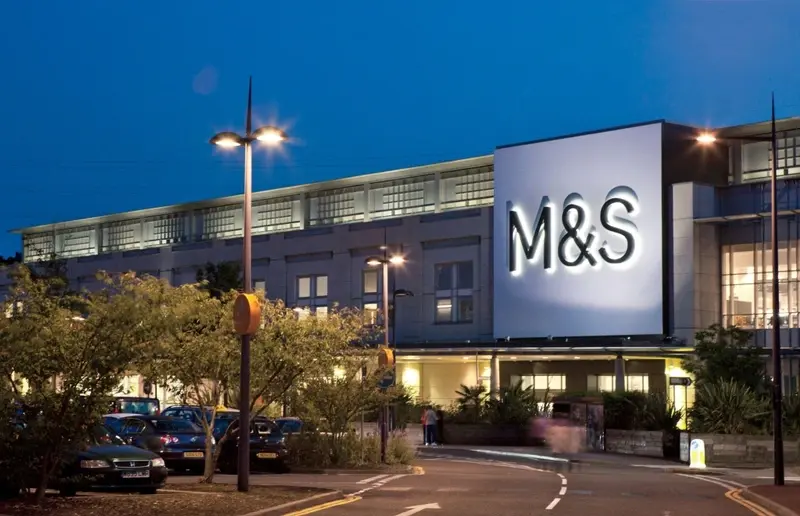
Shares in high-street stalwart Marks & Spencer (MKS) climbed 4.9% to 96.5p on good volume after the firm posted an upbeat first half trading statement.
Sales for the six months to 26 September fell 15.8% to £4.09 billion, which given the severity of the impact of lockdown on customer footfall and retail sales overall is fairly respectable. It was also bang on consensus interim revenue forecasts, based on Refinitiv data.
Chief executive Steve Rowe called the performance ‘much more robust than at first seemed possible’.
FOOD SALES STEADY
Food sales were up 2.7% on a like-for-like basis and 6.6% excluding sales to the hospitality industry during the half. Food-on-the-move sales were down but with customers typically spending more per trip categories such as grocery, meat, fish and poultry performed well.
Marks’s standalone Simply Food outlets saw a 19% increase in sales in the second quarter, while retail park outlets saw a 13% increase. In contrast, high-street stores registered a 14% decrease in sales, city centre outlets saw a 29% drop and shops in airports and service stations saw a 75% drop in business due to travel restrictions.
The Ocado Retail business, owned 50% by Marks and 50% by Ocado (OCDO), delivered 47.9% growth in revenues for the six months to 30 August and contributed £38.8 million to the group’s adjusted pre-tax profits.
CLOTHING & HOME HEADWINDS
As expected, clothing and home sales were heavily impacted by lockdown with first quarter sales down 61.5%, but the second quarter saw a recovery with sales down a less dramatic 21.3% to leave the half down 40.8%.
The firm reported strong sell-through of surplus stock and a 34% surge in online sales as it gained market share. Like online rival ASOS (ASC:AIM), Marks also reported a lower level of customer returns which helped margins. However, with two thirds of clothing and home sales generated in-store the online gain wasn’t enough to halt the overall decline.
Also, once stores did re-open there were still substantial headwinds including a shift in demand, with formal wear, outerwear and party clothes - which accounted for a quarter of clothing sales last year - out, and loungewear and casual wear in as more people moved from office working to home working.
GETTING THERE
Although the firm posted headline pre-tax losses of £87.6 million - the first loss in its 94-year history as a public company - the business is being transformed.
Chief executive Steve Rowe claimed the pandemic had pushed management to bring forward ‘three years’ change in one, to become a leaner, faster and more digital business’.
The switchover to M&S products on the Ocado Retail platform was already scheduled but still had to be executed perfectly and the take-up of its products has been highly encouraging.
Store costs are being cut with the focus shifting to front of house service helped by its investment in store technology. The relaunched Sparks loyalty programme has been a hit with eight million customers signing up, and the reshaping of the clothing and home offering has been 'substantially accelerated' to reflect both lower demand and a switch to more popular, faster-moving products.
With Christmas and Brexit still to negotiate, analyst Clive Black of Shore Capital says management is 'in good heart, up for the challenges and positioning a self-improving M&S to be fit for purpose, especially on the digital front, and more relevant to shoppers in the future.’
READ MORE ABOUT MARKS & SPENCER HERE




